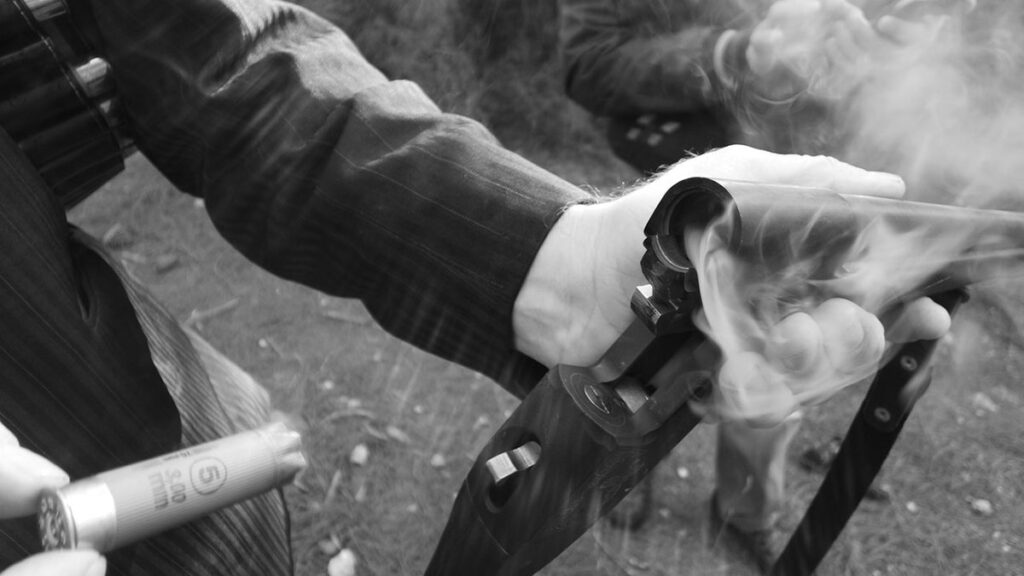
Tired shoulder after a day of shooting? Want reduce shotgun recoil? Find less kick through a few good tricks.
After an action-packed morning of crow control (yes, you can eat crow) we were running low on customers and shotgun shells. Declaring the action over, it was time for battle damage assessment. The crows were the clear losers with dozens strewn across the cornfield to our front. Empty shotgun shells littered the ground around our blinds.
Sore Shotgun Shoulders
Off to my right, I noticed a walking casualty. That was my son, who looked like he’d come in a poor second during a prize fight. On my left flank, the other shooter in our three-man team, Mike, was still fully functional despite a mild headache. Same for me, although we were all firing an identical load.
Our anti-crow artillery was a screaming-fast 12 gauge, 2 ¾” load rated at 1500 fps (feet per second), topped by 1 1/8 ounces of copper-plated #6 shot. I’ve never crunched the numbers regarding its recoil, but it can’t be much less than the notoriously hard-kicking 1 oz. rifled slugs that clock 1600 fps. The latter are sold five per box but the count for the former is 25.
Any crows that appear are fair game for all, so it’s not uncommon for each shooter to burn through three or four boxes. This being one of those days, in theory, we should’ve all been hammered. Was my son a wimp? Not hardly. Fresh out of the Marines, he was in darned good shape whereas Mike and I had a few extra decades to “ripen.” We clearly weren’t macho-men – but age does bring experience.
Three Sources of Recoil
The three major recoil sources are ejecta mass, velocity, and the weight of the gun. Ejecta mass is the sum of a shotshell’s powder charge, wad, and shot. In guns of constant weight, greater ejecta mass equals more recoil. Boosting its velocity will generate more kick. But, a heavier gun can soak up some recoil.
5 Easy Ways to Reduce Shotgun Recoil
If you find yourself with a sore shoulder after a day with the shotgun, there are ways to reduce that recoil and keep your arm moving the next day. Let’s look into each of them in detail.
#1 – Make the Right Shotgun Choice
The most obvious place to start looking at reducing shotgun recoil is to look at the choice of shotgun itself.
Even a smallish 20 Gauge can be a kicker, especially in a light break-barrel gun of six pounds or less. By comparison, a 6 ½-pound gas operated semiauto will seem mild. In all gauges, gas guns tend to provide the greatest relief – usually at the expense of extra weight.
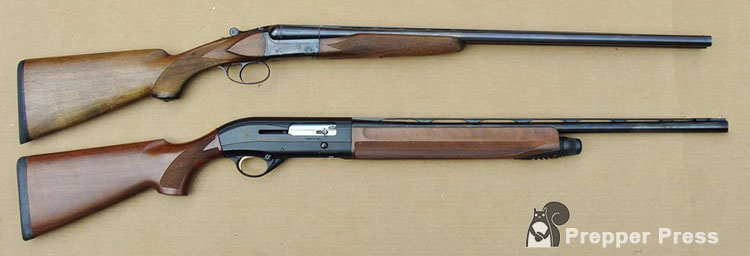
During recent years, inertial semiautos (popularized by Benelli) have caught on due to their simplicity and lighter weight. These recoil-actuated designs tend to kick more, but this situation has been largely remedied by Benelli. Their Comfort-Tech stocks include built-in shock absorbers and those I’ve shot were more on par with gas guns.
On claybird circuits, the popular choices are semiautos and over/unders, the latter typically configured as heavier guns to soak up recoil.
For general field use or defense, a slide-action (pump) is probably still the dominant repeater. Lacking inherent recoil moderation, the key to less kick is a heavier gun and/or smaller gauge.
Consider Smaller Gauges
Parents start kids on single-shot break-barrel guns but, even if they fit (often not the case), they can be light enough to pack a real wallop in the smallest gauges.
The 16 gauge used to be a widespread choice and its standard 1 oz. shells still have a following, especially in Europe. But today, the even smaller 20 gauge is much more popular due to development of 3” magnums that can exceed a 16’s payload in a smaller gun. The 20’s standard 2 ¾” target load is a 2 ½-dram, 7/8 oz. version. It’s a manageable choice, especially for smaller-statured shooters in an average-weight gun (3” magnums can kick because of 1 ¼ oz. payloads).
The even smaller 2 ¾” 28 gauge is the upland elitist’s choice, capable of producing useful patterns from ¾ oz. of shot.
The smallest .410-bore offering is a 2 ½” version loaded with a mere ½ oz. of shot. The weirdly long 3” Magnums can fire 11/16 oz., but they produces poorer patterns than most 28s. The 28 gauge and .410s do kick less, but shells are much more expensive and harder to find. In a very light gun they can still kick, too.
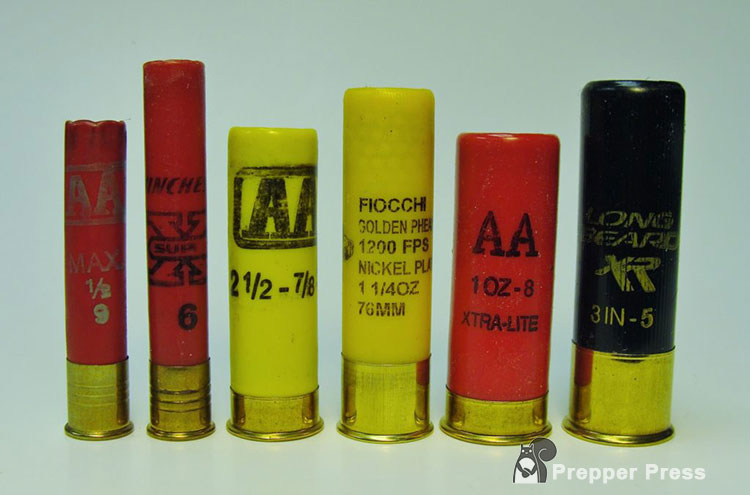
Based on cost and availability of loads, the 12 and 20 gauges are better choices for most of us. Buy one with a 3” chamber and you can still shoot 2 ¾” shells, including low-recoil/low noise 20 gauge loads.
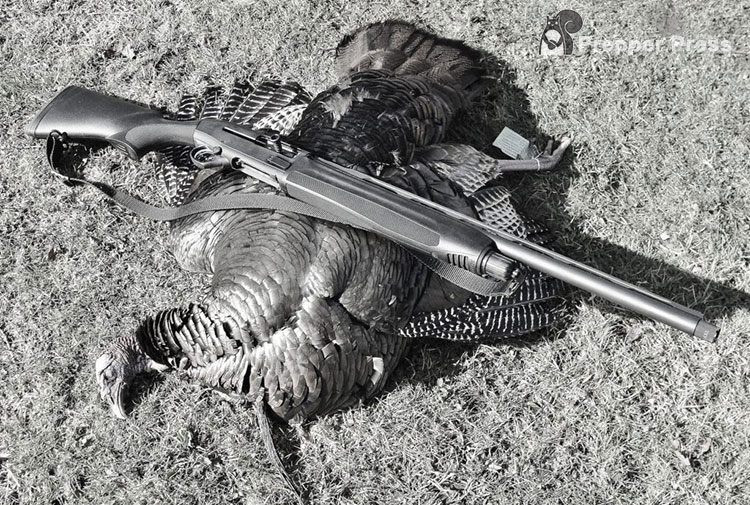
A lot of older shooters and some younger ones have figured out a secret: If today’s smaller gauges can get the job done, why beat yourself to death with a larger gun? Still, the smaller gauge is often an additional gun. If I had to live with just one, it would certainly be a 12 gauge capable of firing 3” magnums – rarely.
Semi-Automatic Shotgun Advantage
Mike and I were largely intact thanks to our gas guns. No, they don’t run on unleaded (although steel shot is part of their diets). We’re talking semiautomatics, which function by utilizing a portion of the same high-pressure gas that expels their payloads. The recoil impulse is thus incremental rather than an instantaneous jolt. In the end, the total foot-pounds of recoil are the same, but the perceived reduction is noticeable compared a similar-weight pump or double-gun.
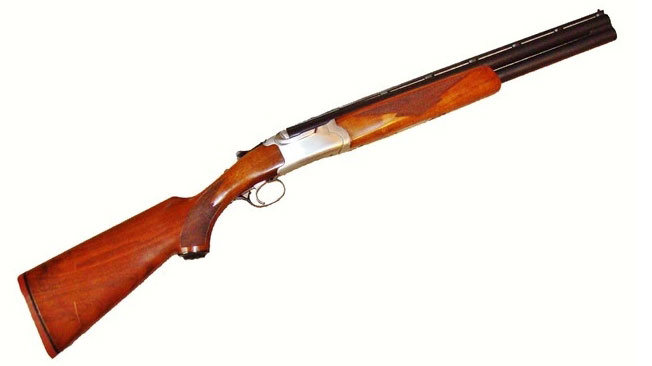
My son’s shotgun fell into the latter category. He was shooting a Ruger Red Label over & under with a major modification: It’s barrels had been professionally shortened from 28-inches down to 20 inches. Although the result was a much lighter gun, it was also a whole lot louder – actually, more like a canon!
During this higher-volume shoot, any handiness was more than offset by its greatly increased recoil and muzzle-blast (the latter only adding to the punishment). My son left with a bruised shoulder and sore cheek. For him, it was a one-time event. From that point forward he used a more tractable semiauto for higher-volume shoots.
Good decision. The alternative would’ve been an almost incurable flinch – something I’ve seen all too often. In fact, many shotgunners don’t know they have one.
#2 – Add Weight
Serious claybird competitors do lots of shooting, so recoil is a concern. Thus, many of their autos will be gas-operated, and some could be equipped with bulbous forend caps designed to add extra weight. To rebalance the gun, additional weights are often installed within the stock (some with hydraulic dampening features).
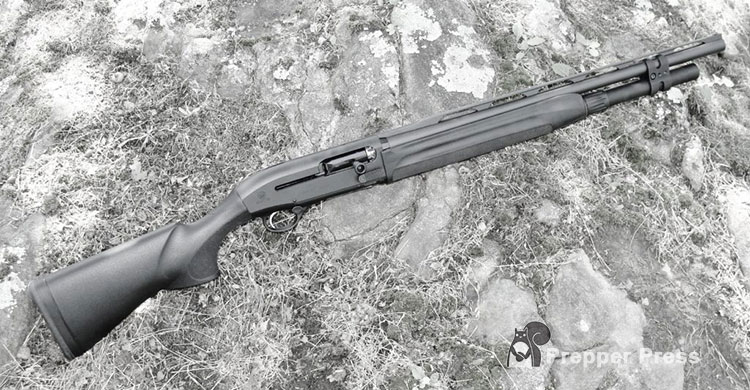
Hardcore over/under shooters use similar tricks, sometimes with clamp-on barrel weights. If properly balanced, these guns also track well on fast-moving targets. The downside? Heavy guns are hard to tote or, for some, even manage.
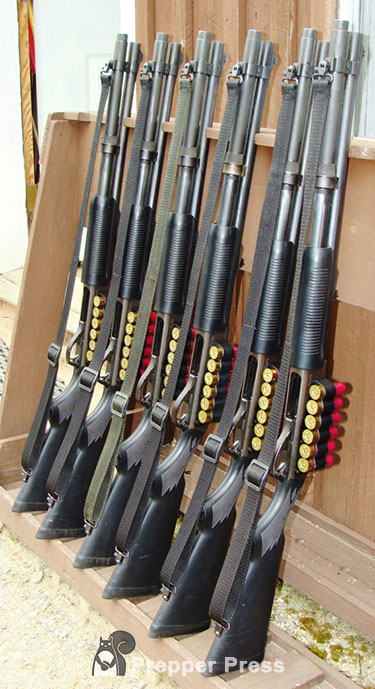
At one point during my firearms training tenure we shot 12 Ga. 2 ¾” 00 Buckshot and slugs by the ton (literally). In political terms, we (the cadre) sometimes “mis-spoke” regarding their recoil. Many troops, including some he-men, were clearly intimidated by their Newtonian effects, intensified by our light 4+1 Remington M-870 pump guns.
A proper gun mount helped, but new low-recoil loads offered universal relief. Next came extended magazines and side-saddle shell holders which increased gun weight to the point where recoil was relatively tolerable.
On reactive steel targets, 2 ¾” 3-Dram, #7 ½ target loads made a great substitute for buckshot while taking a smaller bite out of our ammo budget. As a bonus, our reputations even improved!
Downsides? The guns handled more like truck axles and were hard for some smaller shooters to manage. A shotgun is still a formidable defensive tool and that’s the role for a system like this one.
#3 – Shoot Smaller Shells
Most folks understand a 3” magnum 12 gauge will produce more thump than a 2 ¾” shell. Heck, some Magnum loads boot out nearly two ounces of shot! Fortunately, we can often live with less.
Practice makes perfect so let’s look at some 2 ¾” target loads marketed for busting claybirds. A 2 ¾ Dram, 1 1/8 ounce, 1145 fps shell will kick noticeably less than a longer-range 3-Dram, 1250 fps version (the powder charge). Switching to an 1145 fps 1 oz load will help even more. Shop around and you may find some truly mild subsonic 950 fps shells like Winchester’s Low Recoil/Low Noise Feathers, which are great for newer shooters.
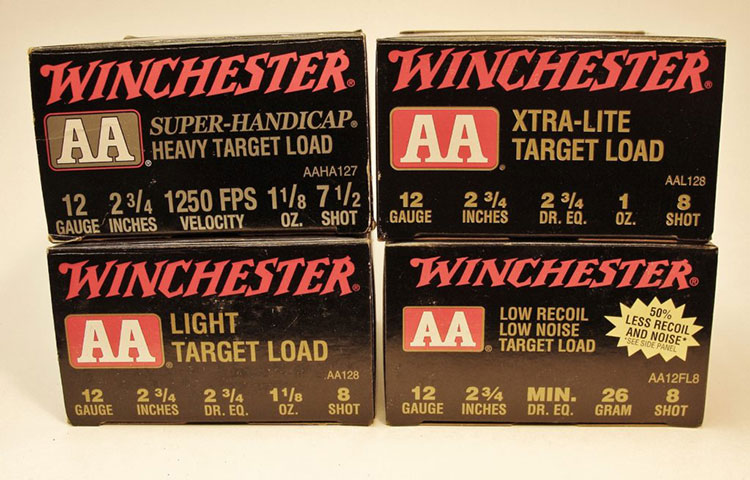
The lightest shells may not reliably cycle in semiautos (especially inertial types), but you can single-load them to bust clay pigeons. Of course, this becomes a non-issue with pumps, single-shots, or any double-guns that employ mechanical triggers (inertial types reset via recoil).
Others will be after a field-worthy gun that won’t bog them down while busting brush or lugging decoys. But it’s worth considering the effects of today’s much hotter magnums like the 12 gauge 3 ½” waterfowl loads that rival 10 gauge performance. Shoot these in anything and you’ll experience serious recoil!
The few I’ve fired from pump guns were downright vicious. Two-barreled guns should be equally nasty. Thus, autoloading shotguns are increasingly popular.
Goose Hunt Lesson
During a goose hunt on Maryland’s fabled Eastern Shore, the action was non-stop with plenty of opportunities for all including our guide, Bill. The others in our pit blind were shooting 3 ½” 12 gauges, but both Bill and I were shooting 3” Beretta 12 gauge autoloaders. Bill probably sees as much waterfowl action as anyone on the East Coast so I was interested in his shotgun preference. Turned out he only fired 3” shells, using steel #2 shot and an improved-cylinder choke. For him, this combination worked fine with less risk of a permanent flinch. Ditto.
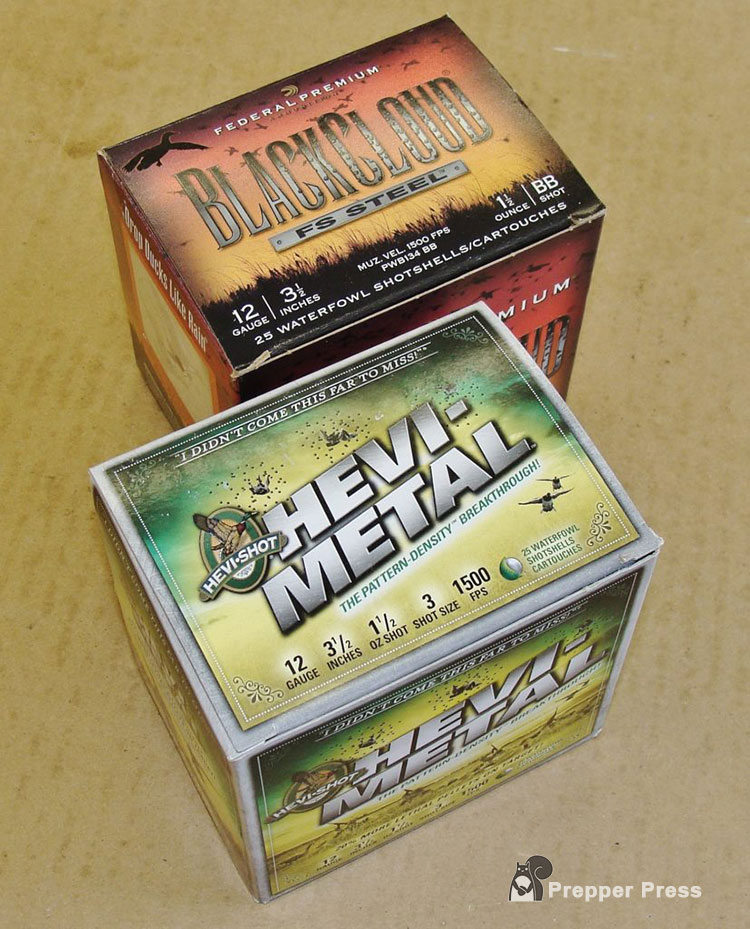
I don’t own anything beyond a 3” gun and seldom fire other than 2 ¾” loads. The few 3” magnums are reserved for turkeys and waterfowl. For upland birds I’ll often switch to the smaller 20 gauge. In fact, twenties are now reappearing in duck blinds thanks to non-toxic shot refinements. More surprising is the use of .410s for turkeys, made possible through the same technology.
#4 – Add the Right Accessories
The market for gun accessories is gigantic. You can find something for everyone and everything. Here are some choices.
Barrel and Choke Porting
Redirecting pressure via upward facing barrel ports can help a gun stay on target. That’s certainly true with hotter handgun and rifle cartridges, but shotgun pressures are relatively low. Some shooters swear by barrel porting (a series of holes near the muzzle). The only dramatic reduction I experienced came from a no-longer produced screw-in compensator/choke tube sold by Briley. With slugs, it was amazing. Today, I rely more on recoil pads.
Recoil and Cheek Pads
Recently, I bought a lightweight Franchi O/U 12 gauge for use on pheasants in open, hilly terrain. At 6.2 lbs., it has plenty of rearward thump, even with lighter loads. So, right off the bat, I had a new Decelerator recoil pad installed. It’s softer and thicker than the original so, for me, the stock needed to be shortened a full ½-inch.
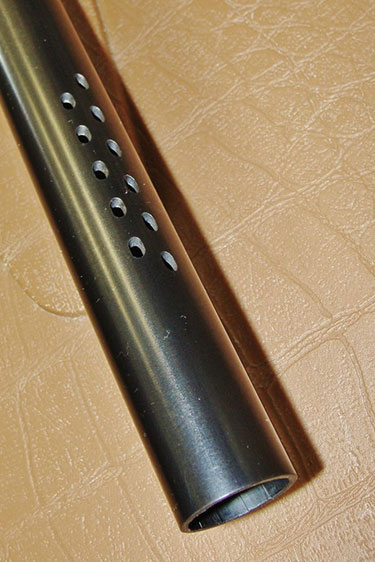
Barrel porting. Results may vary. 
A good recoil pad helps. This stock was professionally shortened to maintain a proper LOP.
Good chance this O/U will beat my cheekbone though, since most others do. I’ll probably add an adhesive Cheek-Eez, but I’ll shoot some patterns first. These rubber cheek-pads come in different thicknesses which can also be used to shift pattern placements. Fast shotgun work occurs by pointing rather than aiming. The rear sight is the shooter’s eye and changing its relationship to the muzzle can shift patterns – for the better, or for worse.
#5 – Ensure Proper Fit
Some folks add pads without considering their sum effects (the cheek pad is one example). Regarding stock length (length-of-pull/LOP), an old axiom involves using the measurement from the crook in a bent elbow to the crease in a trigger finger as a guide. That’s better than nothing, but not perfect. Using a pre-mounted gun, two finger’s worth of space between the nose and gun-hand thumb is a better gauge of fit. Factor your clothing into this.
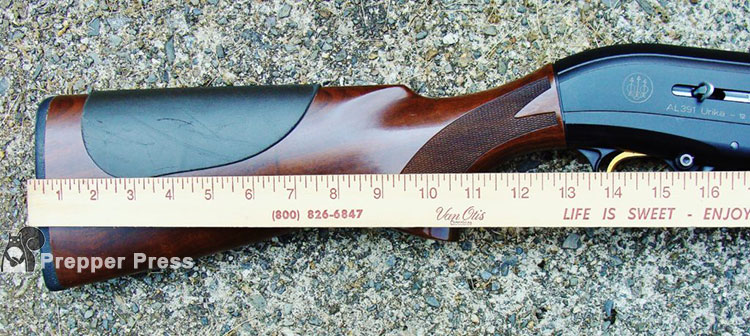
A stock too long will be hard to mount and could shift patterns laterally. A stock too short can beat the hell out of the shooter. So, as a rule of thumb, hard-kicking guns are generally more tracible using the longest LOP one can effectively manage. Most shotguns designed for adults run somewhere around 14 ¼ – 14 ½”. Youth and ladies models trend shorter at around 13 ½” or so.
Pay Close Attention to Kids
While viewing a recent Alaskan TV episode, I watched a young daughter attempt to shoot a svelte single-shot .410 break-barrel shotgun under the tutelage of her father. The stock was far too long, the gun was plainly too heavy, and her position was contorted. Sure enough, the camera cut away just after she fired. The outcome was predictable and unpleasant.
It’s been our observation as range rats that many adults shoot in spite of themselves, via awkward positions developed at an early age through poorly matched guns and well-intentioned adults. Youth and ladies guns are sold for good reasons – but they still need to fit!
Recoil Reduction Conclusion
Other factors have bearings on recoil such as stock design, forcing cones, bore diameters, wads, and headspace, etc. But, the biggies are gun weight versus ejecta mass and its velocity, followed closely by fit.
A last thought on weight: the longstanding British formula of 1:96 still has merit. For every ounce of shot, factor in 96 ounces of gun weight. Thus, the cutoff for a 16 gauge SxS was six pounds. That lighter-weight 12 gauge O/U I described? It has 3” chambers but, trust me, it’ll never see anything stouter than a 2 ¾”, 3-dram, 1 1/8-oz load.
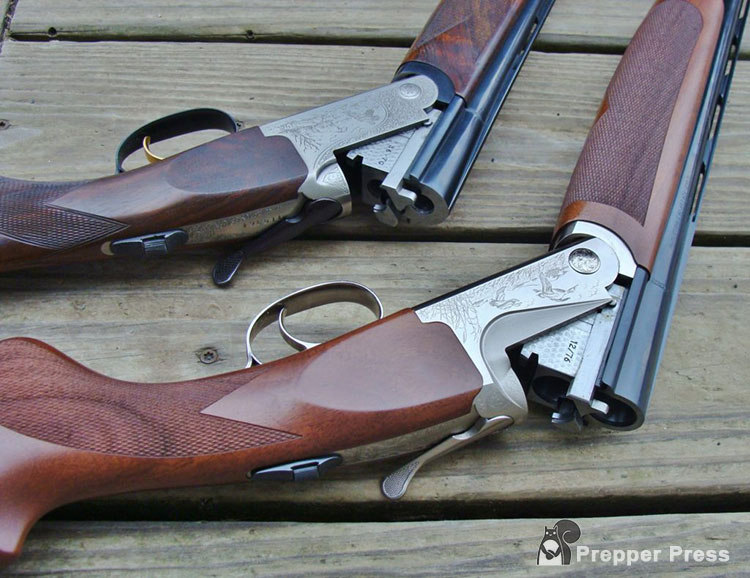
And don’t rule out shooting form! A proper gun mount can go a long way toward mitigating recoil. I have a twin to the above lightweight O/U, chambered for .410 shells. It’s lots of fun to shoot and also quite mild. But, after returning to any 12 gauge, the first couple shots tend to clobber me. The fix is a return to my normal firmer grip which probably loosens subconsciously. To manage harder kickers I still try to remain fluid, but I’ll intentionally firm up grip with both hands.
Want to learn more about shotguns? Check out my book, Shotguns: A Comprehensive Guide.

1 comment
does using 23/4 shells in a 3 1/2 chamber reduce recoil?? there are barrels without forcing cones..Master gun Maker Bill Holmes made from the ground up single shot custom trap and skeet shotguns with no forcing cone,his customer loved the less recoil,and said the patterns were just fine…